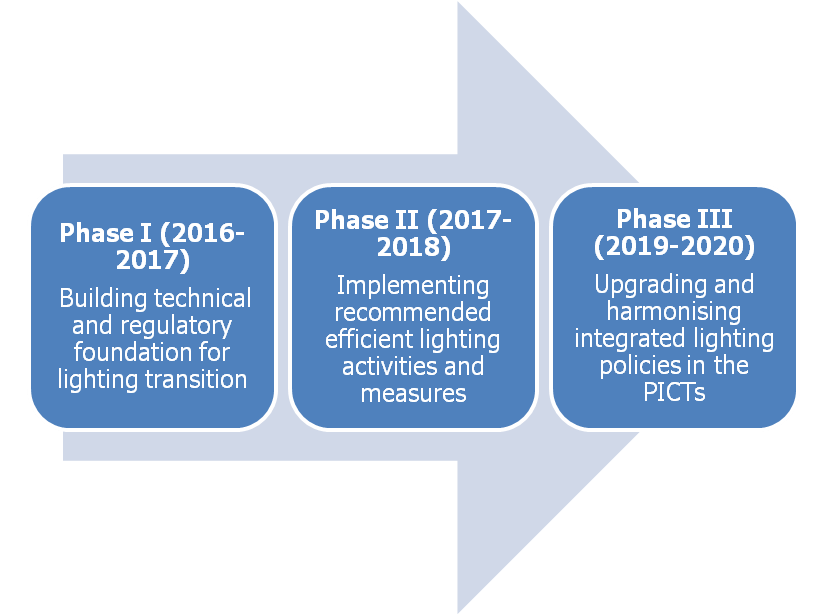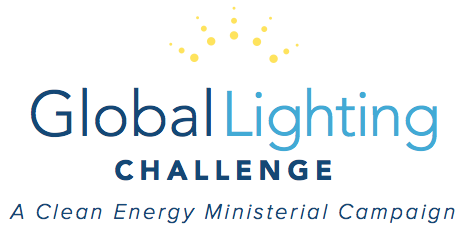In this issue, we provide:
- Details about the recently validated Pacific Efficient Lighting Strategy;
- Information on a new UNEP-GEF en.lighten initiative monitoring, verification and enforcement guidance note;
- A short summary of the UNEP-GEF en.lighten initiative and GELC Global CFL Check testing Project;
- Details of Singapore’s extension of MEPS to include non-directional lamps;
- Information on en.lighten expert taskforce meetings for LED lighting and controls;
- Details of the new Global Lighting Challenge;
- An update on progress with the United for Efficiency initiative;
- Information on a new report from the IEA 4E Implementing Agreement on the achievements of energy efficiency standards and labelling programmes;
- Details of new guidance from the Pacific Appliance Labelling and Standards Programme on developing legislation and regulations for MEPS and labelling;
- An overview of the new IEA Energy Efficiency Market Report 2015;
- A roundup on the UNEP en.lighten webinar series.
First Ever Pacific Efficient Lighting Strategy Validated
The first ever Pacific Efficient Lighting Strategy (PELS) was validated by representatives from nine Pacific Island Countries and Territories (PICTs) at a dedicated workshop in Nadi, Fiji in August 2015.

Participants during the PELS Technical Validation Workshop, August 2015, Nadi
The PELS was developed by the Secretariat of the Pacific Community (SPC) and the UNEP-GEF en.lighten initiative, with financial and technical support from the Australian Government under the Southeast Asia and Pacific Monitoring, Verification and Enforcement Project, to guide the region’s transition to high efficiency, environmentally-sound lighting by 2020. The PELS development process benefited significantly from the awareness raised and policy development initiated under the Pacific Appliance Labelling and Standards (PALS) programme funded by the Australian Government and implemented by the SPC.
To ensure an effective and self-sustaining transition to efficient lighting in PICTs, the PELS presents a cohesive set of national and regional actions for on-grid and off-grid lighting, targeting lighting end-uses in residential, commercial and government buildings, as well as street and outdoor lighting. It recommends a structured, three-phase approach, which takes into account the uneven development status of the institutional and regulatory frameworks required to support efforts to phase out incandescent lamps and promote efficient lighting in each participating country.
|
PELS implementation timetable |
During Phase I, between 2016 and 2017, the PELS concentrates on building strong foundations for a lighting transition through establishment of supporting regulatory frameworks, product registration and database systems, and development of recommended measures for sectoral lighting improvements in each participating country. Phase II, between 2017 and 2018, will focus on the implementation of the efficient lighting activities and measures recommended in Phase I, and Phase III, during 2019 and 2020, will focus on efforts to harmonise and enhance the effectiveness of efficient lighting programmes in PICTs.
|
Measures outlined in the PELS are expected to reduce the region’s electricity consumption for lighting by 36 per cent per year, save the region over US$ 1.7 billion and reduce greenhouse gas emissions by 4.6 million tonnes by 2030. It is estimated that implementation of the strategy at the regional and national levels will require a budget of approximately US$ 5.8 million. It is hoped that around 65% of this proposed budget will be secured from international and bilateral donor agencies and development banks to support technical assistance, direct expenses for regional activities and seed funds for financial mechanisms and demonstration projects. The remaining 35% will be in-kind and cash contributions from PICTs for implementation of relevant in-country activities.
For more information, contact Makereta Lomaloma, Programme Manager, PALS and PELS Programmes, Energy Programme, Economic Development Division, SPC at .
New Guidance Note from the en.lighten Initiative on Performance Testing of Lighting Products
Performance testing is a fundamental step in creating lighting policy and regulation to transform the market to energy efficient products. A new publication, produced by the UNEP-GEF en.lighten initiative, with financial and technical support from the Australian Government under the Southeast Asia and Pacific Monitoring, Verification and Enforcement Project, provides practical guidance for policymakers, regulators and other stakeholders on this important aspect of any monitoring, verification and enforcement programme.
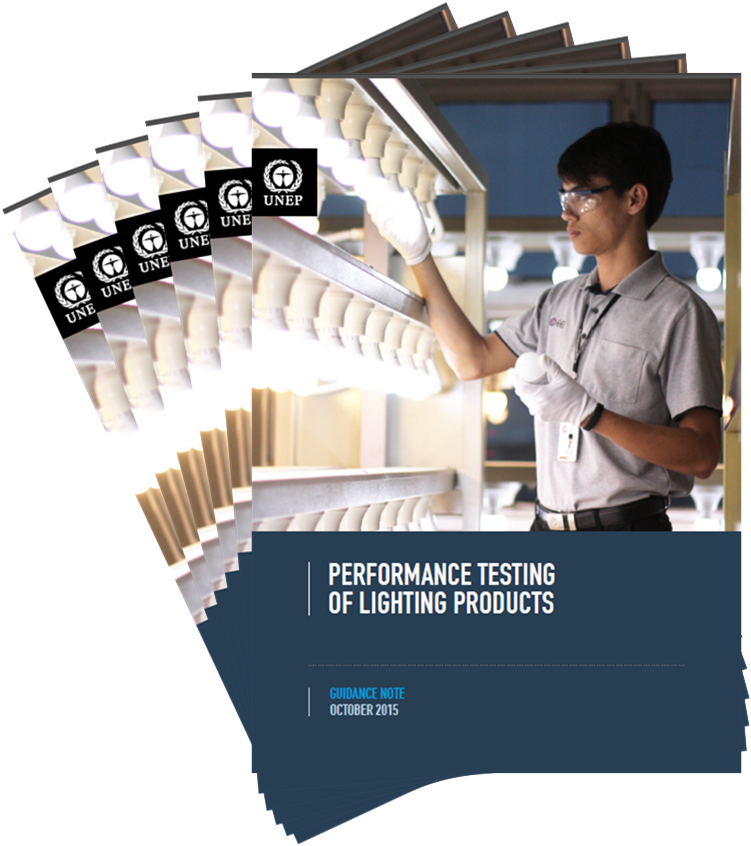 |
The guidance note, Performance Testing of Lighting Products, focuses on the actual performance testing of lighting products, and the interpretation of the results of those tests, as a tool for increasing energy efficiency. It is primarily aimed at countries that wish to implement new, or revised, testing procedures and use test data to support the development and implementation of their energy efficient lighting policies and compliance programmes. It serves as a practical resource for governments on recommended processes to follow for testing products, interpreting testing results, and using them for enforcement and to inform policy. It offers both specific and general recommendations that policymakers, laboratory personnel, and other stakeholders can use in developing testing programmes. |
To download a copy of the guidance note from the publications section of the en.lighten website, click here.
Global CFL Check Testing Results Now Available
The final report from the UNEP-GEF en.lighten initiative and the Global Efficient Lighting Centre (GELC), the UNEP Collaborating Centre for Energy Efficient Lighting, on the Global Compact Fluorescent Lamps Check Testing Project is now available on the en.lighten website. This project was initiated to improve understanding of lamp quality status, and associated technical issues, in participating developing countries, with the objective of helping decision-makers recognise the importance of quality lighting and the value of strengthening national quality control and testing systems.
Under the project, country representatives purchased a total of 47 models of compact fluorescent lamps (CFLs), in ten participating countries: Azerbaijan, Chile, Costa Rica, Dominican Republic, Guinea-Bissau, Lebanon, Panama, Tonga, Tunisia and Uruguay. The samples of the models were then shipped to GELC and tested for safety, performance and mercury content.
The test results show the main safety issues for certain models of lamps are interchangeability, mechanical strength and protection against electric shock. The energy performance test results for some parameters (power factor and luminous efficacy of lamps with warm colour temperature) were good and showed a related high compliance rate. However, other results revealed low quality of some key parameters (low luminous efficacy for cool colour temperature lamps, poor lumen maintenance and colour consistency). Overall, there was a large deviation in quality among the lamps tested.
Most of the models tested were non-amalgam mercury lamps and the mercury tests showed a wide range in the mercury quantity in the lamps. The test results also demonstrated that the amalgam lamps tested had a longer life (higher lumen maintenance compliance rate) than the non-amalgam lamps, yet they had much lower mercury content.
The local markets involved in this project have both good quality and poor quality products and this report serves to illustrate how much variation there can be in the quality of lamps. It provides a ‘snapshot’ reference point for countries to consider and begin to plan how they would implement necessary monitoring, verification and enforcement activities to improve and control lamp product quality.
To download a copy of the report, Compact Fluorescent Lamp Check Test Results and Analysis Report, click here.
Singapore Extends Energy Efficiency Regulations to Include Non-directional Lighting Products
Effective from 1 July 2015, Singapore’s energy labelling and performance standard regulations now specify that non-directional lighting products to be supplied, or for sale, in Singapore must be registered, labelled with an energy label and meet prescribed minimum energy efficiency standards. The amendment to the regulation includes provision for a new energy label and extends the country’s minimum energy performance standards (MEPS) and mandatory energy labelling (MELS) requirements to include:
- Incandescent lamps (tungsten filament and tungsten halogen);
- Compact fluorescent lamps with integrated ballasts (CFLi); and
- Non-directional light emitting diode (LED) lamps.
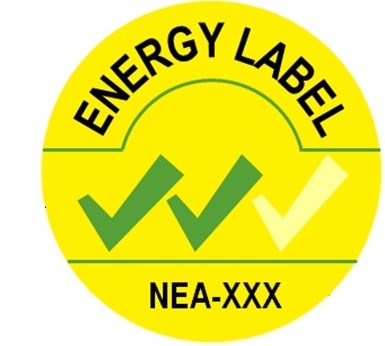 |
The new label will carry useful energy information to help buyers make a more informed decision on the different types of energy saving lamps in the market which best fit their lighting needs, including the energy rating of the lamp.
Under this new energy rating system, there are three efficiency bands (represented by one to three ticks). The highest efficiency level is denoted by three ticks and the lowest by a single tick. Based on currently achievable efficiency and life cycle cost consideration, incandescent lamps will have to be at least rated one-tick efficiency, while CFLi and LED lamps have to be at least rated two-tick efficiency in order to meet the MEPS requirements. |
For more information on Singapore’s energy efficient lighting regulations, click here.
en.lighten Expert Taskforce on LED Lighting and Controls
On November 5-6, the UNEP-GEF en.lighten initiative hosted an Expert Taskforce meeting to develop best practice strategy, policy and actions to promote the use of energy efficient light emitting diode (LED) lamps and controls. This is the first of three meetings which will bring together country policymakers, manufacturing partners, environmental organisations, and international organisations. The policy recommendations developed will support countries in leapfrogging to LED technology, which offers very large electricity savings and has had a quickly decreasing purchase price in recent years.
Under UNEP-GEF United for Efficiency (U4E), similar Expert Taskforces will be hosted for residential refrigerators, air conditioners, electric motors, and distribution transformers. Based on the recommendations of the Expert Taskforces, a guidebook will be developed for each product to describe the best practice policies to leapfrog to energy efficient products.
New Global Lighting Challenge Set to Lead the Way for Lighting
|
Led by the Clean Energy Ministerial and UNEP through its en.lighten initiative, the Global Lighting Challenge is a race to reach cumulative global sales of 10 billion high-efficiency, high-quality and affordable advanced lighting products, such as light-emitting diode (LED) lamps. The Challenge will showcase new commitments and actions to accelerate the transition to high-efficiency, high-quality and affordable lighting that are consistent with the Challenge’s guiding principles. |
|
Commitments can be to promote, buy, sell or finance these products, or to implement supporting policies such as converting government buildings or street lamps to LED lighting. The Global Lighting Challenge was announced at a White House Forum, Catalyzing Markets for Off-Grid Clean Energy Access, in Washington D.C on 22 October 2015.
For more information, please email or click here to visit the Global Lighting Challenge website.
Launch of the United for Efficiency (U4E) Initiative Website
The UNEP-GEF United for Efficiency (U4E), which supports countries in their transition to energy efficient appliances and equipment, has launched a new website, http://united4efficiency.org. Additional tools and reports will soon be published on the website, such as country assessments on the benefits (energy, greenhouse gas and financial) of a transition to energy efficient lighting, appliances and equipment.
The United for Efficiency (U4E) initiative is a collaboration between UNEP, the United Nations Development Programme (UNDP), International Copper Association (ICA), CLASP, Natural Resources Defense Council (NRDC). Additionally, six global manufacturers support the initiative and 17 countries have committed to advancing energy efficiency in their country. For more information on partnering with U4E, click here.
New Report from the IEA 4E Implementing Agreement Highlights the Achievements of Appliance Energy Efficiency Standards and Labelling Programmes
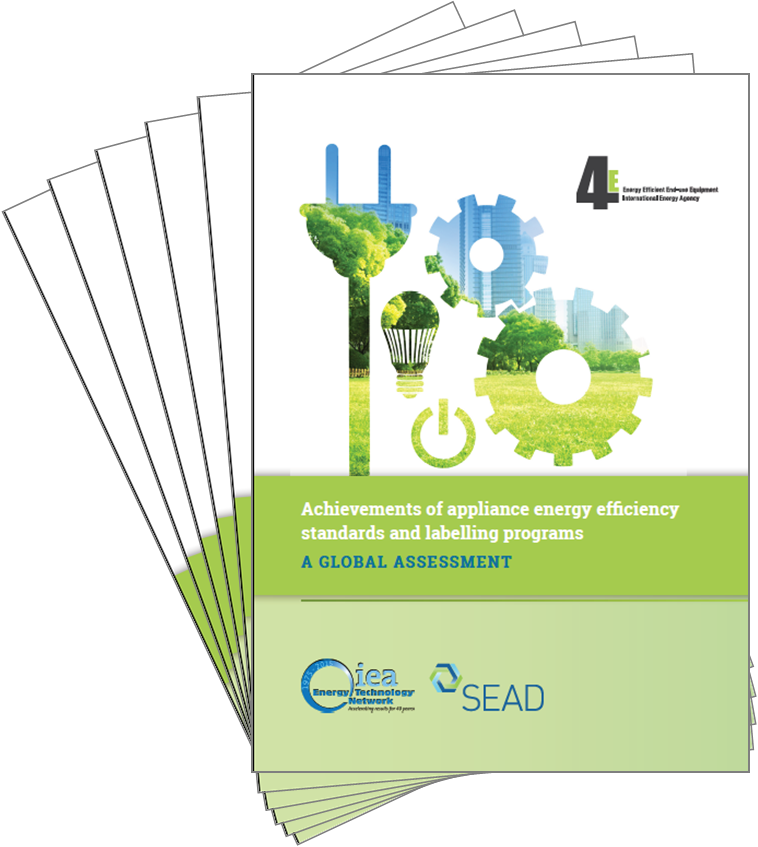 |
In a recently published report, Achievements of Appliance Energy Efficiency Standards and Labeling Programs: A Global Assessment, the International Energy Agency (IEA) Implementing Agreement on Energy Efficient End-Use Equipment (4E) outlines the historic achievements of government energy efficiency standards and labeling programmes.
Currently, operating in more than 80 countries around the world, covering more than 50 different types of appliances and equipment in the commercial, industrial, and residential sectors, these types of programme provide the cornerstone of most national energy efficiency and climate change mitigation policies; and are among the longest running and most widely adopted type of national energy efficiency programme.
The report summarises the recorded achievements of these programmes and discusses |
the impact they have made in saving energy, greenhouse gas emissions and on the price of appliances.
To download a copy from the IEA 4E website, click here.
New Guidance on the Development of Legislation and Regulation for Minimum Energy Performance Standards and Labelling Available
Developed as part of the Pacific Appliance Labelling and Standards Programme, new guidance on the development of legislation and regulation for minimum energy performance standards and labelling is now available. The new guide, A Guide to Legislation and Regulation for Minimum Energy Performance Standards and Labelling (MEPSL) for Appliances and Lighting, is based on lessons learnt through the development of MEPSL legislations and regulations in several Pacific Island Countries and covers the main issues to be addressed in drafting of legislation and regulations to support MEPSL. As such, it provides a useful complement to the existing UNEP-GEF en.lighten initiative guidance note, Developing Minimum Energy Performance Standards for Lighting Products.
To download a copy of this new guide, click here.
IEA Provides an Insight into the Energy Efficient Market
Energy efficiency improvements over the last 25 years saved a cumulative USD 5.7 trillion in energy expenditures. This virtual supply of energy generates multiple benefits for governments, businesses and households, including greater energy security from reduced dependence on energy imports and billions of tonnes of greenhouse gas emissions reductions.
|
Strengthening our understanding of the energy efficiency market and the prospects over the medium term is becoming increasingly important. To this end, the International Energy Agency (IEA) report, Energy Efficiency Market Report 2015, evaluates the impact of energy efficiency in the energy system and assesses the scale and outlook for further energy efficiency investment, including an in-depth look into the buildings energy efficiency market and the electricity sector.
The report presents a number of case studies at the national, state and municipal level, including examinations of Latin America’s two largest economies, Brazil and Mexico, which are looking to efficiency to boost productivity and social development. |
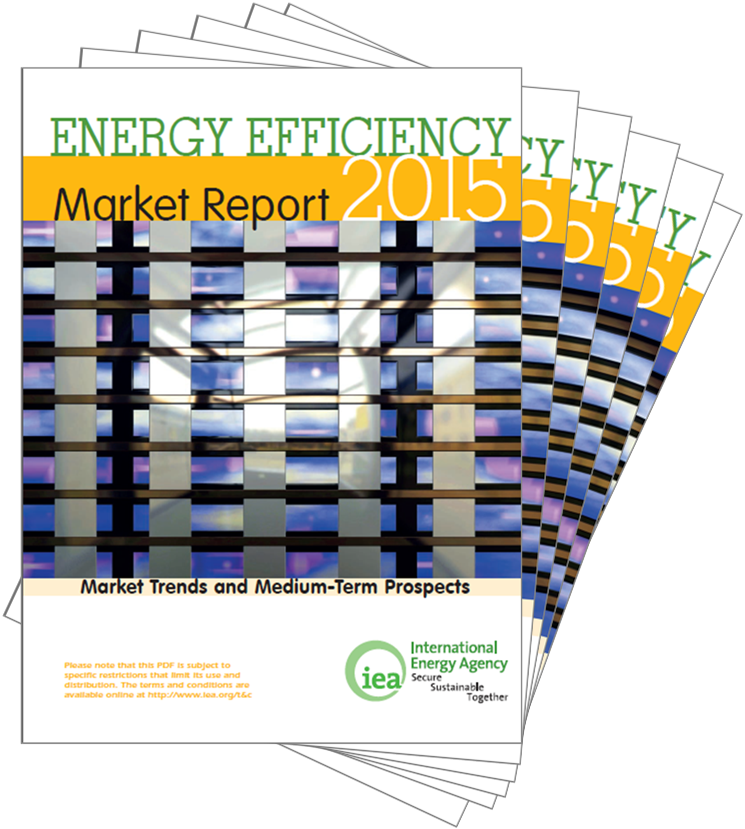 |
Energy-exporting countries like Saudi Arabia and the Russian Federation are also increasingly turning to efficiency to increase exports and reduce the costs of growing domestic energy consumption. In addition to national governments, major urban areas such as Tokyo, Seoul and Paris are increasingly enabling energy efficiency investment.
To download a free copy of the report from the IEA website, click here.
Informational and technical webinars
The final UNEP-GEF en.lighten initiative webinar on monitoring, verification and enforcement topics was held in August 2015. However the presentations and audio recordings from all eleven webinars held over the series will continue to be available on the en.lighten website as a resource for policymakers and other stakeholders. The webinars, which formed part of the Southeast Asia and Pacific Monitoring, Verification and Enforcement Project, supported by the Australian government are:
- Best Practices for Enforcing Efficient Lighting Regulations;
- CIE Test Method Standard for LED Lamps;
- Communication of Lighting Product Performance Standards and Labelling Programmes to Supply Chain Providers;
- Developing a Legislative Framework to Support Successful Monitoring, Verification and Enforcement Activities for Energy Efficient Lighting;
- Evaluation Indicators for Energy Efficient Lighting MVE Policy;
- How to Create and Operate a Lighting Product Registration System;
- Lamp Product Performance Tests and Interpretation of Results;
- Lighting Product Benchmarking as an Energy Baseline for Change;
- Lighting Product Registration Systems: Design and Operation;
- Market Baselines and Surveillance for Efficient Lighting Products;
- Testing Lamp Efficacy, Lumen Maintenance, Rated Life and Uncertainties.
To download any of these webinars, click here.
Dates for Your Diary
lites.asia/ASEAN SHINE-Lighting workshop
January 2016 – Bangkok, Thailand (tbc)
SE4All Energy Day at COP21
7 December 2015 – Paris, France

